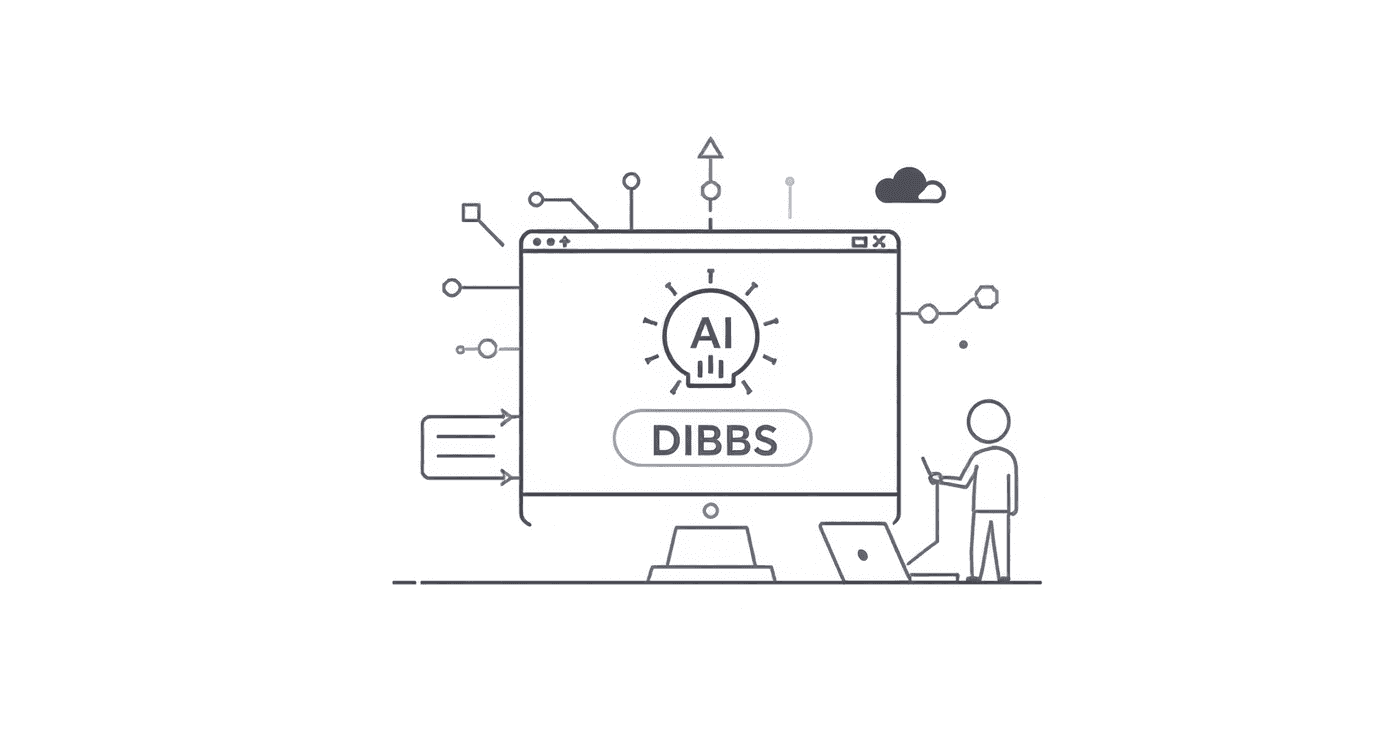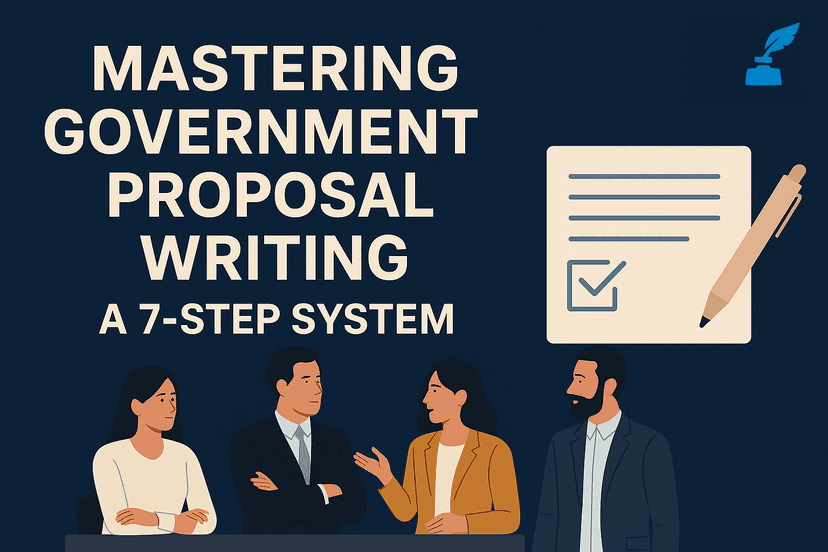The DIBBS Black Hole: Why You Can't Find DLA Contracts (And the AI Tool That Can)

The DIBBS Black Hole: Why You Can't Find DLA Contracts (And the AI Tool That Can)
The Defense Logistics Agency (DLA) is the engine of the U.S. military’s supply chain. As the nation’s combat logistics support agency, it manages a staggering flow of goods and services for every branch of the armed forces, from the Army and Navy to the Space Force.1 The scale is almost incomprehensible: the DLA handles over $34 billion in goods and services annually, processing an average of 100,000 requisitions and 10,000 contract actions every single day.3 For any government contractor, this represents one of the largest and most consistent pools of potential revenue in the world.
This immense river of opportunity flows through a single, official gateway: the DLA Internet Bid Board System, or DIBBS.4 On paper, DIBBS is a web-based application designed to let vendors search for, view, and submit quotes on DLA contracts.6 In reality, for countless contractors, it feels less like a gateway and more like a brick wall. It’s a “hidden gem” 7 so buried under layers of complexity that it has become notorious for being “frustrating” 8, “archaic,” and “super buggy”.9
If you’ve ever spent hours navigating DIBBS only to come up empty-handed, you are not alone. This article will pull back the curtain on this critical but deeply flawed system. We will dissect the fundamental problems that make finding contracts a nightmare (Problem). We will then explore the real-world business costs—the wasted time, lost revenue, and crushing frustration—that stem from these flaws (Agitate). Finally, we will introduce a modern, AI-driven platform that transforms this entire process from a daily struggle into a powerful strategic advantage (Solution).10
Part I: The Problem - Decoding the Frustration of the DIBBS Portal
The frustration with DIBBS is not just a feeling; it's a reaction to a series of concrete, systemic flaws. Validating these struggles is the first step to overcoming them. For years, contractors have voiced their difficulties, and even the DLA itself is aware of the platform's shortcomings. The issues are rooted in the system's outdated design, its reliance on a cryptic language of codes, and its complete inability to manage the sheer volume of data it presents.
An Interface Frozen in Time: Why DIBBS Feels Like a Digital Relic
The most immediate and universal challenge of DIBBS is its user interface. Logging into the portal can feel like stepping back in time two decades. The design is a primary source of user frustration, characterized by a confusing layout, an overwhelming presentation of information, and frequent technical errors.12 In a 2016 survey conducted by the DLA, the agency acknowledged this pain point directly, noting that "Less experienced users reported lower satisfaction rates indicating a need for more 'user friendly' updates".13
This is not a new problem. The user experience is so poor that it has been described by contractors on forums like Reddit as "archaic and super buggy".9 Third-party services that have built businesses around DIBBS explicitly market themselves by highlighting how their tools help users avoid the DIBBS interface, where they would otherwise have to "slog through" thousands of records to find what they need.8 The core issue is a fundamental mismatch: DIBBS is a 21st-century firehose of data being pushed through a 20th-century faucet.
One might assume that since the DLA is aware of these issues, a fix would be forthcoming. However, the situation is more complex. The same 2016 DLA report that acknowledged the user-friendliness problems also revealed a critical constraint: "DoD security regulations mandate the password requirements which limits the flexibility to make changes".13 This statement exposes a permanent tension between the Department of Defense's rigid security protocols and modern, user-centric design principles. The system's architecture is bound by security mandates that predate the intuitive interfaces we now take for granted. Therefore, the DLA cannot simply "fix" the UI without a massive, slow, and expensive overhaul of its underlying security infrastructure. This means the user frustration is not a temporary bug but a long-term, structural feature of the platform. Contractors waiting for DIBBS to become user-friendly will be waiting indefinitely, creating a clear and persistent need for a tool that can bridge this cavernous gap.
The "Code-Speak" Barrier: Why You Need a Translator to Find Opportunities
Beyond its clunky interface, DIBBS forces its users to communicate in a cryptic, government-specific dialect. The platform does not operate on plain English. To find opportunities effectively, a contractor must be fluent in a language of codes and acronyms. The primary search methods revolve around identifiers that are meaningless to anyone outside the federal procurement world.14
These essential codes include:
-
National Stock Number (NSN): A 13-digit numeric code used to identify all standardized material items of supply as they have been recognized by all NATO countries.1
-
Federal Supply Class (FSC): The first four digits of the NSN, which identify the general group and class of an item.1
-
Commercial and Government Entity (CAGE) Code: A unique five-character identifier for companies doing business with the federal government.16
DLA's own user guides and the DIBBS search forms heavily prioritize these codes over simple descriptive text.1 While a text search for a term like "filter element, fluid" is technically possible, it is treated as a secondary function. The system is fundamentally built for users who already know the precise NSN, FSC, or CAGE code for the item they want to supply.14
This reliance on "code-speak" creates a significant information asymmetry that functions as a powerful barrier to entry, protecting incumbent contractors and hindering new competition. Consider the journey of two different businesses. An incumbent firm that has supplied a specific type of bolt to the DLA for a decade knows its 13-digit NSN by heart. Their bid manager can log into DIBBS, enter the code, and immediately see all relevant solicitations. In contrast, a new small business that manufactures the exact same bolt—knowing its material, size, and application—is at a complete disadvantage. They don't know the NSN. They are forced into a time-consuming, frustrating research process just to find the right code to even begin searching for an opportunity. This "knowledge gap" is not a natural learning curve; it is an artificial wall created by the platform's very design. It actively disadvantages new entrants, which runs directly contrary to the U.S. government's stated goal of fostering small business participation and ensuring a level playing field.2
Drowning in Data, Starving for Insight: The Inadequacy of DIBBS Search
The final piece of the DIBBS frustration puzzle is the sheer, unmanageable volume of data. The DLA posts thousands of Requests for Quotations (RFQs) every single day.7 Even a highly specific search can produce an avalanche of results. For instance, a search for a common "MIL-DTL-38999" series military connector can return over 1,100 records.8 A simple text search for the word "bolt" can yield more than 1,600 results.20
The platform's tools for managing this deluge are woefully inadequate. Filtering capabilities are primitive, largely restricted to the codes mentioned above, issue dates, and basic small business set-asides.14 There is no effective way to intelligently narrow the results based on nuanced criteria like technical requirements, specific delivery locations, or past award values. This forces contractors into a brute-force approach: they must manually "dig through" 15 or "slog through" 8 hundreds or thousands of irrelevant listings to find a handful of viable opportunities. This exact issue—the inadequacy of the search function—was one of the top complaints cited by suppliers in the DLA's own user survey.13
This inefficient workflow imposes a hidden "Time Tax" on every single user. It is a direct and significant operational cost that disproportionately harms smaller businesses with limited resources. Imagine a bid manager at a small company spending just two hours per day on this low-value sifting and sorting. That's ten hours per week. At a conservative loaded cost of $75 per hour, this "Time Tax" amounts to $750 per week, or $39,000 per year, in wasted human capital. Larger, established firms may have the headcount to absorb this cost, but for a small business, it represents a massive drain on resources that could be far better spent on strategic sourcing, proposal writing, and business development. The platform's inefficiency is not just an annoyance; it is a significant and recurring financial liability.
Part II: The Agitation - The True Business Cost of a Broken System
The flaws in the DIBBS portal are not just technical inconveniences. They translate into tangible, painful business consequences that can stifle growth, create unacceptable risk, and undermine the very government initiatives designed to help small businesses succeed. The frustration of using DIBBS is the symptom; the damage to your bottom line and your company's future is the disease.
The Unlevel Playing Field: How DIBBS Undermines Small Business Goals
There is a deep and frustrating contradiction at the heart of DLA procurement. On one hand, the U.S. government has a legal mandate to award 23% of all prime contract dollars to small businesses.18 The DLA even operates a dedicated Office of Small Business Programs, offering training, guidance, and outreach events to help small firms get started.2 The official policy is one of welcome and support.
On the other hand, the lived experience of contractors trying to break into this market is one of immense difficulty. Forum discussions are filled with small business owners who feel it is "impossible to award a contract" and that opportunities are consistently funneled to "specific companies that dominant" the space.19 The system is so opaque and challenging to navigate that an entire cottage industry of consultants, trainers, and specialized software providers has emerged, all promising to help contractors overcome the platform's inherent complexities.20
This reveals a troubling reality: the very tool that small businesses must use to access DLA opportunities is structurally biased against them. The DIBBS platform itself is a primary obstacle to achieving the government's stated policy goals. The "code-speak" barrier favors incumbents with decades of legacy knowledge, leaving new entrants scrambling to catch up. The hidden "Time Tax" of inefficient search disproportionately drains the limited financial and human resources of small businesses, who cannot afford to waste thousands of dollars on non-productive work. The system's design creates functional barriers that actively work against the government's own small business initiatives, turning what should be a land of opportunity into a frustrating and often fruitless endeavor for the very audience the policy is meant to help.
The Sword of Damocles: The Ever-Present Threat of "Account Locked"
Beyond the daily frustrations of searching and bidding, DIBBS poses a more insidious, existential risk to contractors: the arbitrary and punitive nature of its account management. This is not a simple matter of forgetting a password. DIBBS accounts are automatically locked after just 30 days of inactivity and can be completely deleted after one year.24
Reinstatement is not a simple reset. It can trigger a "full reinstatement package review by the DIBBS Reinstatement Board," a bureaucratic process with no clear timeline.25 New users, particularly resellers or those operating from a commercial or home office, are at high risk of being flagged almost immediately. This can trigger an invasive and sudden demand for sensitive information, including copies of driver's licenses or passports for all company owners, photographic evidence of manufacturing capabilities, and detailed explanations of the company's business model.25
While this aggressive validation is part of a legitimate effort to combat fraud, it operates on a "guilty until proven innocent" principle, creating an environment of high administrative friction and severe business risk. Once an account is flagged and locked, the burden of proof is placed entirely on the contractor to prove their legitimacy.25 This process is not a user-friendly verification but a quasi-investigation that can halt a company's ability to bid on contracts for an indeterminate amount of time. For a new business whose entire go-to-market strategy might be focused on the DLA, an account lock is not a minor inconvenience—it is a potential death blow. The security protocol, while well-intentioned, is a blunt instrument that creates unacceptable levels of business uncertainty and risk, scaring away the very innovators and agile small businesses the DLA needs to diversify its supplier base.27
Part III: The Solution - How SamSearch.co Replaces Frustration with AI-Powered Precision
The challenges of DIBBS are not insurmountable. They are, however, impossible to solve using the tools the government provides. The answer lies in leveraging modern technology to build a smarter, faster, and more intuitive bridge to DLA opportunities. SamSearch was built to be that bridge. With a specific focus on integrating and simplifying DIBBS data, our platform uses the power of Artificial Intelligence to directly solve the core problems that cost contractors time, money, and peace of mind.
From "Code-Speak" to Conversation: The AI Search Revolution
The most fundamental problem with DIBBS is its reliance on "code-speak." SamSearch completely dismantles this barrier with its AI-powered search engine. We have recently completed a full DIBBS integration, pulling this critical data into our intelligent platform.28 This means you no longer need to know a specific NSN, FSC, or CAGE code to find what you're looking for.
Our system allows you to search using "plain language" and "natural language queries".30 Instead of trying to guess a 13-digit number, you can simply describe what your business sells. A search for "cybersecurity services for DoD," "machined aluminum parts for aviation," or "commercial-grade cleaning supplies" is all it takes. Our AI engine understands your intent and translates it into a curated list of relevant DIBBS opportunities. This feature single-handedly levels the playing field, democratizes access to information, and eliminates the hours of frustrating research that used to be a prerequisite for competing.
From Hours of Research to Minutes of Insight: Conquering Information Overload
The "DIBBS Time Tax"—the hours wasted sifting through irrelevant data—is a major drain on resources. SamSearch gives you that time back with a suite of AI tools designed for rapid analysis and decision-making.
-
AI-Generated Summaries: Every opportunity in SamSearch includes a concise, AI-generated summary. This gives you a quick, easy-to-understand overview of the key details—what the agency wants, key deadlines, and set-aside status—without ever having to open a document.30
-
AI Attachment Summarizer: The days of manually reading through dense, 50-page PDF solicitations are over. Our AI Attachment Summarizer automatically scans all attached files and extracts the most critical information, presenting it in a digestible format.31
-
Chat with Opportunities: This is our most powerful feature for making fast, confident decisions. Instead of hunting for a specific clause in a document, you can simply ask our AI assistant a direct question about the bid. "What are the specific packaging requirements?" "Is this set aside for a Woman-Owned Small Business?" "What is the delivery destination?" The AI analyzes the documents and provides an instant, tailored answer, transforming your workflow from a tedious manual slog into an efficient, interactive analysis.30
Together, these tools allow you to make better bid/no-bid decisions in a fraction of the time. They effectively eliminate the "DIBBS Time Tax," freeing up thousands of dollars in human capital to be reallocated to high-value activities like writing winning proposals and building strategic supplier relationships.
The Ultimate Advantage: A Side-by-Side Comparison
The difference between the old way and the new way is stark. A visual, side-by-side comparison makes the value proposition crystal clear, contrasting the pain of the traditional DIBBS method with the efficiency and intelligence of the SamSearch AI method.
TaskThe Traditional DIBBS MethodThe SamSearch.co AI MethodFinding Opportunities
Manual search using specific, hard-to-find codes (NSN, FSC, CAGE). Results are often overwhelming and irrelevant.8
Natural language search using plain English (e.g., "machined aluminum parts"). AI matches your business profile to relevant DIBBS opportunities.28
Vetting an RFQ
Manually download and read multiple, lengthy PDF documents to find key details. A tedious, time-consuming process.3
Instant AI-generated summary of key requirements, deadlines, set-asides, and potential risks. Grasp essentials in seconds.31
Bid/No-Bid DecisionHours of internal analysis, cross-referencing documents, and trying to gauge competitiveness based on fragmented data.
Make quick, confident decisions using the "Chat with Opportunities" AI assistant to ask specific questions about the solicitation documents.30
Competitive AnalysisSeparate, manual search of past award data on DIBBS or other sites. Data is disconnected from the current opportunity.
Get a competitive edge with integrated insights on top contractors who have won similar work and view details of related awarded contracts.30
Proposal WritingManual creation from scratch for every bid. A repetitive, time-intensive process with no platform assistance.
Effortlessly draft personalized proposals with an AI-powered text editor and proposal generator that uses the opportunity data and your profile.30
Conclusion: Stop Fighting the System. Start Winning Contracts.
The path to winning a share of the Defense Logistics Agency's multi-billion-dollar budget is paved with obstacles. The DIBBS portal—with its archaic interface, cryptic codes, and administrative risks—is arguably the largest of them all. It costs you time, it costs you money, and it costs you opportunities. Continuing to wrestle with this broken system is a choice to accept inefficiency and hamstring your company's growth.
But there is a better way. You can leverage technology to gain a decisive advantage. SamSearch.co, with its dedicated, AI-powered DIBBS integration, represents a fundamental shift in how you can approach DLA contracting. It is not just another search tool; it is a comprehensive platform that transforms the entire process from a manual, frustrating chore into an intelligent, streamlined, and strategic workflow.
Stop wasting countless hours sifting through irrelevant data. Stop missing opportunities because you don't speak the government's secret language of codes. Stop letting a clunky, outdated portal dictate your potential for growth. It is time to equip your business with the intelligence it needs to compete and win.
Ready to see the difference AI can make? Explore the SamSearch AI-Powered DIBBS solution now and turn frustration into your competitive edge. Click here to learn more: https://samsearch.co/ai-powered-dibbs













